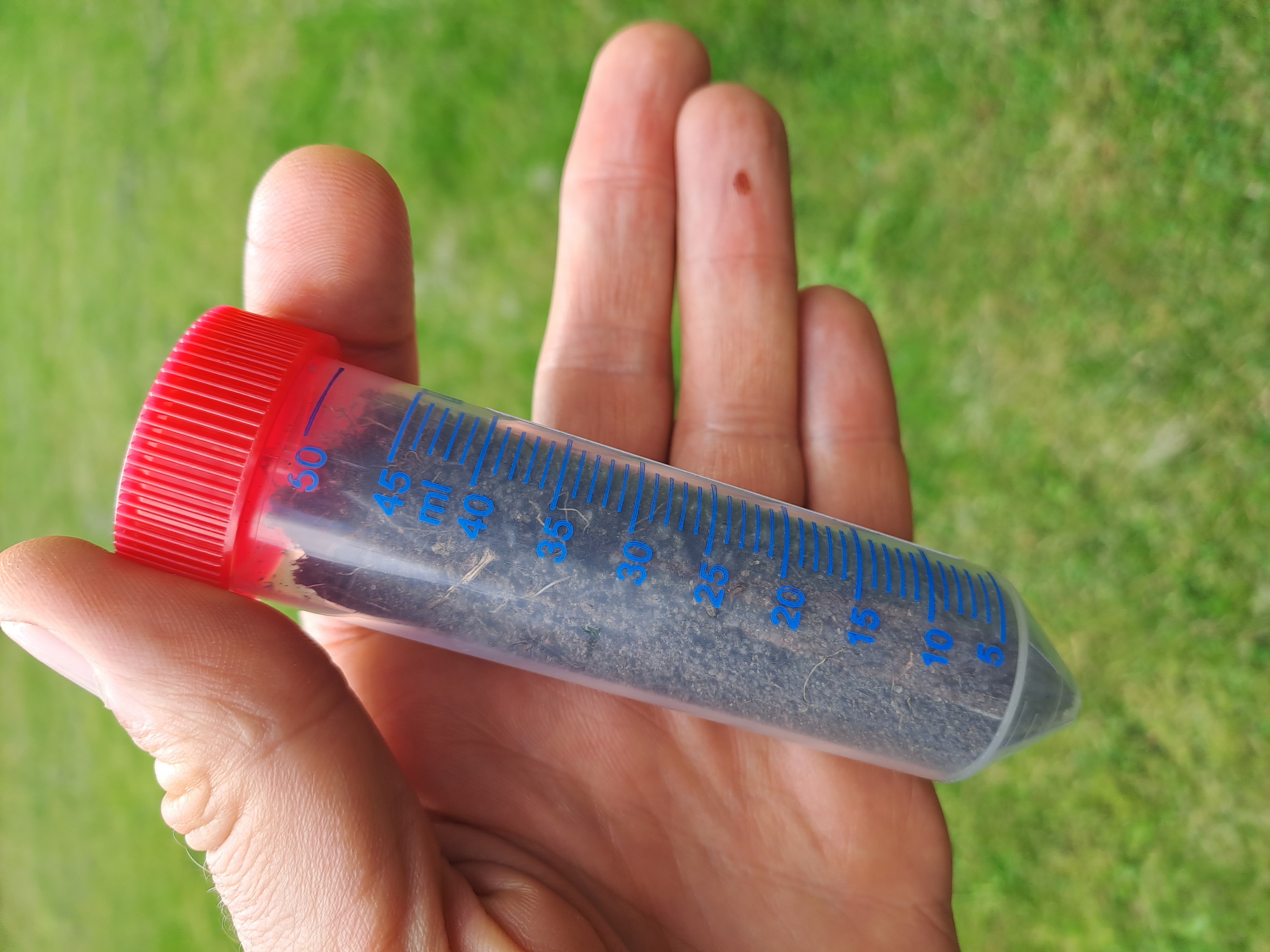 Collecting a sample
Collecting a sample
To be able to extract sufficient DNA from your samples for analysis, we need you to collect a full tube of soil from each of your sample locations. Try not to get plants and mosses in the tube or large stones, as we have to remove these before analysis. Its OK if there are roots in the soil as these are often home to soil organisms. Your completed sample should look like the one in the picture:
Watch our video below to see a demonstration of how to collect a soil sample and how to identify the correct soil layer to sample from. Don't forget that alpine habitats are sensitive to disturbance and can be vulnerable to erosion. When you collect your samples, make sure you minimise disturbance to the plants and aim to leave no areas of bare soil after sampling. When sampling soil under moss mats, push any mosses or plants you have moved back down firmly when you are finished so that they can carry on growing. This is especially important during dry weather conditions.